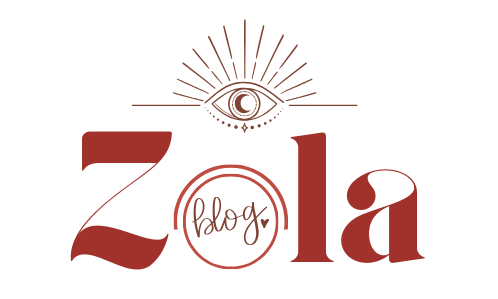Leveraging LinkedIn for Your Job Search
Discover how to leverage LinkedIn for your job search with this comprehensive guide. Learn how to optimize your profile, build your network, and utilize LinkedIn's features effectively.
Discover how to leverage LinkedIn for your job search with this comprehensive guide. Learn how to optimize your profile, build your network, and utilize LinkedIn’s features effectively.

In today’s digital age, LinkedIn has become an essential tool for job seekers. With over 700 million users, it provides a platform to showcase your professional experience, connect with industry leaders, and discover new job opportunities. Leveraging LinkedIn effectively can significantly enhance your job search, helping you stand out to potential employers and recruiters.
In this comprehensive guide, we will explore how to optimize your LinkedIn profile, network with professionals, and utilize the platform’s features to land your next job. Whether you’re new to LinkedIn or looking to refine your strategy, these tips will help you maximize your job search efforts.
1. Optimizing Your LinkedIn Profile
Creating a Strong Headline
Your headline is one of the first things people see on your LinkedIn profile. Make it compelling and reflective of your professional identity. Include your current job title, industry, and key skills. For example, “Marketing Manager | Digital Strategy Expert | Content Creator.”
Writing a Professional Summary
Your LinkedIn summary should provide a snapshot of your professional background, skills, and career goals. Write in the first person and keep it concise yet informative. Highlight your key achievements and what you bring to the table.
Detailing Work Experience
List your work experience in reverse chronological order, including your job title, company, and dates of employment. Use bullet points to describe your responsibilities and accomplishments. Focus on quantifiable results, such as “Increased sales by 20% in Q4.”
Showcasing Skills and Endorsements
Select skills that are relevant to your industry and expertise. Encourage colleagues and connections to endorse your skills. This adds credibility to your profile and highlights your strengths.
Adding a Professional Photo
Your profile photo should be professional and high-quality. Dress appropriately for your industry and ensure the background is neutral. A good profile photo can make a strong first impression.
2. Building Your Network
Connecting with Industry Professionals
Start by connecting with colleagues, classmates, and industry professionals you know. Personalized connection requests can make a positive impact. Mention how you know the person or why you would like to connect.
Joining LinkedIn Groups
Join groups related to your industry or interests. Participate in discussions, share insights, and engage with group members. This can help you build your network and stay informed about industry trends.
Engaging with Content
Engage with content by liking, commenting, and sharing posts from your network. Posting your own content, such as articles or updates about your professional achievements, can also increase your visibility.
3. Utilizing LinkedIn Features
Job Search Function
Use LinkedIn’s job search function to find job listings that match your skills and interests. Filter results by location, industry, and job type. Save searches and set up job alerts to stay updated on new opportunities.
LinkedIn Premium
Consider upgrading to LinkedIn Premium for additional features like InMail messages, which allow you to contact recruiters directly, and access to LinkedIn Learning courses to improve your skills.
Applying with LinkedIn Easy Apply
Many job listings on LinkedIn have an “Easy Apply” option, allowing you to apply with just a few clicks using your LinkedIn profile. Ensure your profile is complete and up-to-date for a seamless application process.
Utilizing the Alumni Tool
The Alumni Tool allows you to search for alumni from your school who are working in your desired industry or company. Connecting with alumni can open doors to job opportunities and provide valuable insights into your target industry.
4. Networking and Outreach
Sending Personalized Messages
When reaching out to new connections or potential employers, send personalized messages. Mention common interests, mutual connections, or specific reasons for reaching out. Personalization increases the likelihood of a positive response.
Requesting Informational Interviews
Informational interviews are a great way to learn about a company or industry and expand your network. Reach out to professionals in your field and request a brief meeting to discuss their career path and gather advice.
Following Up
After making new connections or attending networking events, follow up with personalized messages. Express your appreciation and interest in staying connected. Regular follow-ups can help maintain and strengthen your professional relationships.
5. Showcasing Your Expertise
Publishing Articles
Use LinkedIn’s publishing platform to write and share articles on topics related to your industry. This can position you as a thought leader and attract attention from potential employers and recruiters.
Sharing Industry Insights
Regularly share industry insights, news, and updates on your LinkedIn feed. This demonstrates your knowledge and engagement with your field, making you a more attractive candidate.
Highlighting Projects and Accomplishments
Use the “Featured” section on your profile to showcase notable projects, presentations, or accomplishments. Include links to your portfolio, articles, or other work that highlights your expertise.
6. Preparing for Job Interviews
Researching Companies
Before applying for a job or attending an interview, research the company on LinkedIn. Review the company’s page, recent posts, and employee profiles. Understanding the company culture and values can help you tailor your application and interview responses.
Connecting with Current Employees
If you have connections at a company you’re interested in, reach out to them for insights about the hiring process and company culture. Their feedback can be invaluable in preparing for your application and interviews.
Practicing Interview Skills
Use LinkedIn Learning or other online resources to improve your interview skills. Practice common interview questions and develop strong responses that highlight your experience and qualifications.
7. Monitoring Your Progress
Tracking Job Applications
Keep a record of the jobs you apply for, including the application date, status, and any follow-up actions. This helps you stay organized and follow up on applications as needed.
Analyzing Profile Views and Engagement
Regularly review the analytics on your LinkedIn profile to see who is viewing your profile and how your posts are performing. Adjust your strategy based on this feedback to increase engagement and visibility.
Seeking Feedback
Ask colleagues, mentors, or career coaches to review your LinkedIn profile and provide feedback. Constructive criticism can help you improve your profile and make it more appealing to potential employers.
Leveraging LinkedIn effectively can significantly enhance your job search. By optimizing your profile, building a strong network, and utilizing LinkedIn’s features, you can increase your visibility and attract potential employers. Remember to stay active on the platform, engage with your network, and continuously update your profile to reflect your latest achievements. Start implementing these strategies today to maximize your job search success.
FAQs
How can I optimize my LinkedIn profile for job searching?
Optimize your LinkedIn profile by creating a strong headline, writing a professional summary, detailing your work experience, showcasing your skills, and adding a professional photo. Regularly update your profile to reflect your latest achievements and skills.
What are the best ways to build my network on LinkedIn?
Build your network by connecting with industry professionals, joining LinkedIn groups, and engaging with content. Personalized connection requests and active participation in group discussions can also help expand your network.
How can LinkedIn Premium benefit my job search?
LinkedIn Premium offers additional features like InMail messages to contact recruiters directly, access to LinkedIn Learning courses to improve your skills, and insights into who has viewed your profile. These features can enhance your job search and networking efforts.
What should I include in a personalized message on LinkedIn?
In a personalized message, mention how you know the person or why you would like to connect, common interests, mutual connections, or specific reasons for reaching out. Personalization increases the likelihood of a positive response.
How can I showcase my expertise on LinkedIn?
Showcase your expertise by publishing articles, sharing industry insights, and highlighting notable projects and accomplishments. Use the “Featured” section on your profile to display links to your portfolio, articles, or other work.




